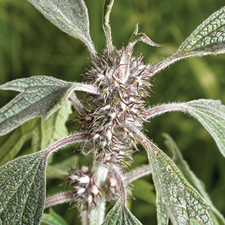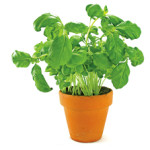The Love of Lore
04 Jul 2010
Many cultures depend on plants for their healing, regenerative and recuperative properties. But do plants also have the power to attract love, ward off evil and restore happiness?
Want to know the real secret to surviving this struggling economy? Put a little poverty-protection in your cupboard: a jar of alfalfa. Having nightmares? Tuck some anise in your pillow. Or maybe you’re trying to attract love? Drop some apple blossoms in your bath.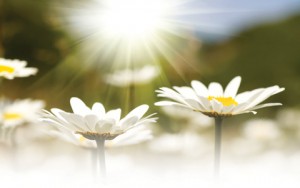 Herbal lore has been passed down from generation to generation for thousands of years. Some of it is very practical, but some of it sounds downright silly. “The history and lore of herbal medicines can be fascinating, and sometimes outlandish,” says Rob McCaleb, president and founder of the Herb Research Foundation, based in Boulder. “However, even some of the most seemingly outrageous folklore uses often hint at rational treatment potential.”
Take that anise in your pillow, for instance. In herbal medicine, anise is used to help relieve gas and indigestion. As anyone who has ever made the mistake of eating a heavy meal before bedtime knows, severe indigestion is surely the cause of many a nightmare!
For ancient civilizations, herbal medicine was the only medicine they knew. But the World Health Organization says 80 percent of the global population still fulfills their primary health-care needs with herbal remedies. We rely heavily on pharmaceuticals in this country, but herbal medicine, after several decades on the fringe, has been welcomed back into the fold and given the recognition it deserves as legitimate science.
“Common herbal remedies can protect vital organs—including the heart, liver and brain—and stimulate the immune system, lower blood pressure, cholesterol and blood sugar levels, and even help prevent cancer,” McCaleb says. “Thus, they offer a level of preventive medicine there is no equivalent for in the world of modern chemical drugs.”
“We’re validating what ancient peoples already knew,” says Boulder herbalist and teacher Brigitte Mars, who has authored several books, including The Desktop Guide to Herbal Medicine. “For instance, plants that have been proven to help the immune system often have a tradition of protecting us from evil spirits and other negative influences.”
Ann Drucker, also a Boulder herbalist and teacher, agrees: “The history of people working with plants goes back 40,000 years. The wives’ tales and legends that have lasted this long are the ones that really work.”
“The future of herbalism lies in the past,” adds Mary Kathleen Rose, a Boulder gardener and herbalist who is also a massage therapist and wellness educator. “The true old-fashioned herbalist… knows that the power of the plants will never be totally measured or defined in the laboratory.”
In fact, plenty of herbal lore exists outside the realm of laboratories. Here’s a sampling of plant legends, folk tales, rituals and superstitions that many people follow, whether it’s just for fun, to honor their ancestors, or because they truly believe in a plant’s magical powers:
Herbal lore has been passed down from generation to generation for thousands of years. Some of it is very practical, but some of it sounds downright silly. “The history and lore of herbal medicines can be fascinating, and sometimes outlandish,” says Rob McCaleb, president and founder of the Herb Research Foundation, based in Boulder. “However, even some of the most seemingly outrageous folklore uses often hint at rational treatment potential.”
Take that anise in your pillow, for instance. In herbal medicine, anise is used to help relieve gas and indigestion. As anyone who has ever made the mistake of eating a heavy meal before bedtime knows, severe indigestion is surely the cause of many a nightmare!
For ancient civilizations, herbal medicine was the only medicine they knew. But the World Health Organization says 80 percent of the global population still fulfills their primary health-care needs with herbal remedies. We rely heavily on pharmaceuticals in this country, but herbal medicine, after several decades on the fringe, has been welcomed back into the fold and given the recognition it deserves as legitimate science.
“Common herbal remedies can protect vital organs—including the heart, liver and brain—and stimulate the immune system, lower blood pressure, cholesterol and blood sugar levels, and even help prevent cancer,” McCaleb says. “Thus, they offer a level of preventive medicine there is no equivalent for in the world of modern chemical drugs.”
“We’re validating what ancient peoples already knew,” says Boulder herbalist and teacher Brigitte Mars, who has authored several books, including The Desktop Guide to Herbal Medicine. “For instance, plants that have been proven to help the immune system often have a tradition of protecting us from evil spirits and other negative influences.”
Ann Drucker, also a Boulder herbalist and teacher, agrees: “The history of people working with plants goes back 40,000 years. The wives’ tales and legends that have lasted this long are the ones that really work.”
“The future of herbalism lies in the past,” adds Mary Kathleen Rose, a Boulder gardener and herbalist who is also a massage therapist and wellness educator. “The true old-fashioned herbalist… knows that the power of the plants will never be totally measured or defined in the laboratory.”
In fact, plenty of herbal lore exists outside the realm of laboratories. Here’s a sampling of plant legends, folk tales, rituals and superstitions that many people follow, whether it’s just for fun, to honor their ancestors, or because they truly believe in a plant’s magical powers:
“Basil cures pretty much anything that ails you.”
“In many cultures, basil is considered an herb of protection and one to attract prosperity and luck,” Mars writes in The Desktop Guide. For this reason, basil has traditionally been given as a housewarming gift. “When I was little, my grandma took a basil plant over to our new next- door neighbors,” says Longmont resident Elaine Charles. “Since she also said that basil keeps bugs away, I asked her if they would rather have a fly swatter for a present.” Basil’s protective properties apparently extend to businesses as well. “Wash the door- knobs of your business with basil water, and sprinkle a little on the threshold,” says Morwyn, a Boulder herbalist, aroma- therapist, tea-leaf reader and mystery writer. “This will ward off vandals and entice customers.” Basil is also believed to attract money, keep a lover faithful, and soothe headaches and heartaches.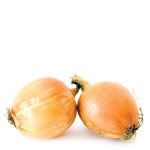
“Onions can help you choose between two lovers.”
Carve each lover’s name on an onion and then set them aside; whichever onion sprouts first is the lover for you. Some sources insist that this works best when performed on December 1. Divination by onions, called “cromniomancy,” can actually be used when deciding between any two alternatives. “My grandma told me about this tradition, too,” Charles says. “I guess she really knew a lot about plants.”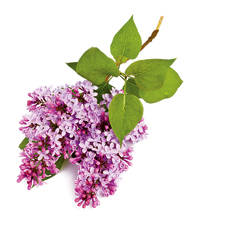
“When cutting flowers from your garden, choose wisely.”
According to the Oxford Dictionary of Plant Lore, lilac and lily-of-the-valley “are considered to cause misfortune if brought indoors.” Indeed, lilacs occupy second place on the Folklore Society’s list of “Unlucky Plants” (hawthorn is first). This makes Kristi Jordan of Niwot wonder, “If my neighbor cuts the lilacs but brings them to my house, who’s stuck with the bad luck?”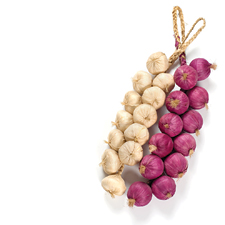
“Garlic wards off vampires.”
“Garlic has a long history of ward- ing off viruses, infection and sickness,” Drucker says. “Later, it extended to all evil, to anything bad that can get you.” There’s even a hieroglyph representing garlic on one of the Pyramids of Giza; archaeologists believe it was put there to strengthen the builders and protect them from disease. Today, you’ll find garlic braids hanging in many kitchens—a tradition that originated in Europe, where garlic was hung in doorways to keep evil spirits at bay. “I have a decorative garlic braid made of ceramic that I got as a wedding gift,” says Diane Hunter of Louisville. “I sure hope the ceramic garlic is as lucky as the real thing.”
“If you’re pregnant, don’t pick any fruit from a tree or bush.”
“My mom and godmother believed that the energy a pregnant woman exudes is deadly to the plant,” says Vicki Cornelius of Longmont. “They both swore that this is what caused the deaths of several cherry trees and raspberry bushes in their yards.” On the other hand, Mars reports, raspberry leaf is quite beneficial to pregnant and laboring women: “Raspberry leaf is considered a supreme tonic for pregnant women because…it can nourish the mother and the growing baby, prevent false labor and facilitate birth.”